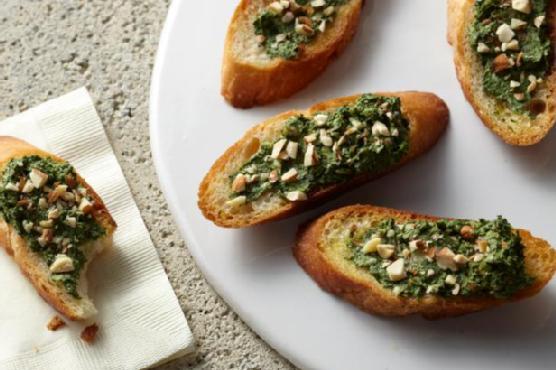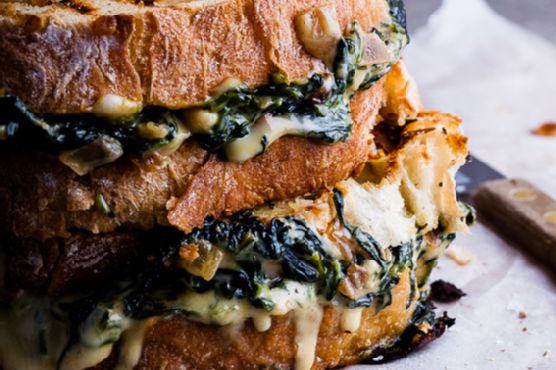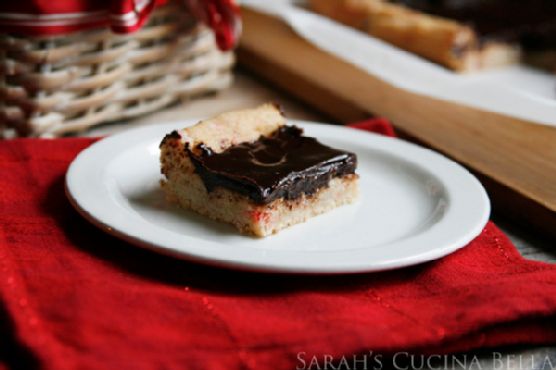Wiggle It, Just a Little Bit—Duck Stock, That Is
Wiggle It, Just a Little Bit—Duck Stock, That Is takes approximately 12 hours from beginning to end. One portion of this dish contains roughly 111g of protein, 386g of fat, and a total of 4024 calories. This gluten free, dairy free, paleolithic, and primal recipe serves 12 and costs $7.5 per serving. A couple people really liked this main course. A mixture of carrots, yellow onions, garlic cloves, and a handful of other ingredients are all it takes to make this recipe so yummy. 34 people were glad they tried this recipe. It is brought to you by Leites Culinaria. All things considered, we decided this recipe deserves a spoonacular score of 98%. This score is outstanding. Try Shrimp Wiggle, Vegetable Stock – A Good Stock is Important, and A little bit Crazy for similar recipes.
Servings: 12
Preparation duration: 30 minutes
Cooking duration: 690 minutes
Ingredients:
2 1/2 pounds carrots, peeled and roughly chopped
25 pounds duck necks, fresh or frozen (ordered from D'Artagnan)
4 garlic cloves, smashed
Mild vegetable or olive oil
Handful fresh thyme
1/4 cup tomato paste
2 1/2 pounds yellow onions, roughly chopped
Equipment:
oven
baking sheet
colander
aluminum foil
roasting pan
stove
tongs
pot
bowl
paper towels
sieve
ziploc bags
Cooking instruction summary:
1. Slide an oven rack into an upper third position and another into the lower third slot in the oven. Crank the heat to 400°F (204°C).2. Rinse the duck necks in cold water and pat them very, very dry. Don’t skimp on the patting-them-dry part, or the necks will steam instead of roast, which means you can say goodbye to those delectable caramelized bits of duck skin and fat that ought to stick to the baking sheet and impart an unspeakable amount of flavor to the stock. (If your duck necks are frozen together, as mine were, chuck them in a colander and run cold tap water over them until you can break them apart.)3. Line two rimmed baking sheets or roasting pans with aluminum foil. Dump a few big handfuls of duck necks onto the pans, drizzle them with some of the oil, and toss to coat them well. Place the necks, side by side, in a single layer. Any extra necks will have to wait for the next batch.4. Roast the necks, turning them several times, until they turn a deep mahogany and the bottoms of the baking sheets are glazed with anatine goodness, 45 to 60 minutes. 5. Meanwhile, find a very, very, very large pot. Barring that, two large ones. Using tongs, transfer the necks to the pot(s) as they come out of the oven and forget about them while you roast the rest. I ended up with nine baking sheets’ worth of necks; they took quite some tIme to roast, although it was mostly unattended. If you like, when you’re done roasting, slide the empty baking sheets on top of the stove and turn the burners beneath them to medium. Drizzle in a little water, scrape up the bits with a spoon, and pour the liquid gold into the pot. Every bit counts.6. Add enough cold water (not warm or hot but cold) to cover the necks by several inches. Bring the water to a gentle simmer—the kind that sends up fairly steady columns of lazy bubbles—and let time work its magic. Skim any scum that forms on the surface. Depending on the size of your pot, this will take anywhere from 1 to 2 hours.7. Once the scum has pretty much been removed, add the onions, carrots, thyme, garlic, and tomato paste to the pot (or divide them between the two pots). Let the stock burble until the meat easily pulls away from the bones, 4 to 6 hours more. Keep an eye on the pot so the bones and vegetables remain submerged. If the stock level drops too much, pour hot water into the pot.8. Place a colander in a bowl or pot large enough to hold a vast quantity of stock and carefully pour the stock into the colander to catch the large bits and bobs of meat and bone. (Watch out, it’s hot!) Toss out the contents of the colander, because if the stock was cooked properly, the liquid will have leached every last iota of flavor from the meat (although the remnants did make a great meal for our Devil Cat, Rory). Wash the pot well and set it aside.9. Line a fine sieve with several layers of paper towels and place it over the pot. Slowly pour the stock through the sieve. Let the stock filter through, without pressing on the paper towels. If you’re a perfectionist or simply like a perfectly clear, shimmering stock, you can repeat this step once or twice. The stock will still be hot, so set aside the pot until it’s cool to the touch.10. Pour the stock into resealable plastic bags and place them in the fridge until you need them. The stock will last up to a week in the fridge or 3 months in the freezer. You can also pour the stock into ice-cube trays and slide them into the freezer; when they’ve frozen, pop them out into resealable plastic bags—though I don’t recommend doing that with all 8 quarts of stock.
Step by step:
1. Slide an oven rack into an upper third position and another into the lower third slot in the oven. Crank the heat to 400°F (204°C).
2. Rinse the duck necks in cold water and pat them very, very dry. Don’t skimp on the patting-them-dry part, or the necks will steam instead of roast, which means you can say goodbye to those delectable caramelized bits of duck skin and fat that ought to stick to the baking sheet and impart an unspeakable amount of flavor to the stock. (If your duck necks are frozen together, as mine were, chuck them in a colander and run cold tap water over them until you can break them apart.)
3. Line two rimmed baking sheets or roasting pans with aluminum foil. Dump a few big handfuls of duck necks onto the pans, drizzle them with some of the oil, and toss to coat them well.
4. Place the necks, side by side, in a single layer. Any extra necks will have to wait for the next batch.
5. Roast the necks, turning them several times, until they turn a deep mahogany and the bottoms of the baking sheets are glazed with anatine goodness, 45 to 60 minutes.
6. Meanwhile, find a very, very, very large pot. Barring that, two large ones. Using tongs, transfer the necks to the pot(s) as they come out of the oven and forget about them while you roast the rest. I ended up with nine baking sheets’ worth of necks; they took quite some tIme to roast, although it was mostly unattended. If you like, when you’re done roasting, slide the empty baking sheets on top of the stove and turn the burners beneath them to medium.
7. Drizzle in a little water, scrape up the bits with a spoon, and pour the liquid gold into the pot. Every bit counts.
8. Add enough cold water (not warm or hot but cold) to cover the necks by several inches. Bring the water to a gentle simmer—the kind that sends up fairly steady columns of lazy bubbles—and let time work its magic. Skim any scum that forms on the surface. Depending on the size of your pot, this will take anywhere from 1 to 2 hours.
9. Once the scum has pretty much been removed, add the onions, carrots, thyme, garlic, and tomato paste to the pot (or divide them between the two pots).
10. Let the stock burble until the meat easily pulls away from the bones, 4 to 6 hours more. Keep an eye on the pot so the bones and vegetables remain submerged. If the stock level drops too much, pour hot water into the pot.
11. Place a colander in a bowl or pot large enough to hold a vast quantity of stock and carefully pour the stock into the colander to catch the large bits and bobs of meat and bone. (Watch out, it’s hot!) Toss out the contents of the colander, because if the stock was cooked properly, the liquid will have leached every last iota of flavor from the meat (although the remnants did make a great meal for our Devil Cat, Rory). Wash the pot well and set it aside.
12. Line a fine sieve with several layers of paper towels and place it over the pot. Slowly pour the stock through the sieve.
13. Let the stock filter through, without pressing on the paper towels. If you’re a perfectionist or simply like a perfectly clear, shimmering stock, you can repeat this step once or twice. The stock will still be hot, so set aside the pot until it’s cool to the touch.1
14. Pour the stock into resealable plastic bags and place them in the fridge until you need them. The stock will last up to a week in the fridge or 3 months in the freezer. You can also pour the stock into ice-cube trays and slide them into the freezer; when they’ve frozen, pop them out into resealable plastic bags—though I don’t recommend doing that with all 8 quarts of stock.
Nutrition Information:
covered percent of daily need















